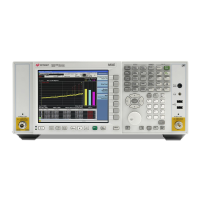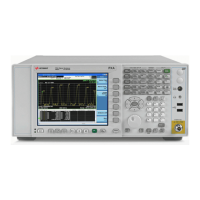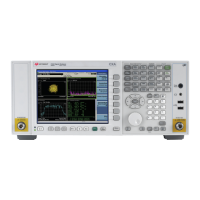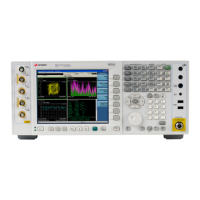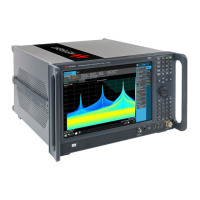3 VMA Mode
3.1 Digital Demod Measurement
See "More Information" on page 338
Remote
Command
[:SENSe]:DDEMod:SEGMent1|…|6:FILTer:MEASurement NONE | RRCosine | GAUSsian |
EDGE | RECTangle | LPASs | USER
[:SENSe]:DDEMod:SEGMent1|…|6:FILTer:MEASurement?
Example
:DDEM:SEGM1:FILT:MEAS GAUS
:DDEM:SEGM1:FILT:MEAS?
Notes Meas filter types that are not available for a particular selection of modulation format are grayed-out as
below:
EDGE is only available for EDGE format, grayed-out for other formats
Preset
RRC
State Saved Yes
Range No Filter | Root Raised Cosine | Gaussian | EDGE | Rectangular | Low Pass | User Defined
Backwards
Compatibility
SCPI
[:SENSe]:DDEMod:FILTer:MEASurement
More Information
Data filtering is used in digital demodulation to limit bandwidth and reduce inter
symbol interference. This instrument includes several commonly used filter types
and has the ability to apply user-defined filters. All filters are computed to 20
symbols in length. If the filter alpha is < 0.2, the instrument uses 40 symbols to
compute filter length (for most formats).
The shape and width of a filter is defined by the alpha (for cosine filters) or the BT
(for Gaussian filters). The alpha or BT indicates the filter roll-off (or excess
bandwidth) of the selected filter that occurs due to the practical inability of filter
technology to build a perfectly square (brick-wall) filter that would have an alpha of
0 (no excess bandwidth). For example, a typical filter with an alpha of 0.3 has a
bandwidth 30% greater than the theoretical minimum.
The instrument's digital demodulator produces two signals: a measured and a
reference signal. These signals are called I/Q Measured and I/Q Reference or, for
FSK measurements, FSK Measured and FSK Reference.
You can select different filters for the measured and reference signals, as shown in
the following generic block diagram.
Vector Modulation Analyzer Mode User's &Programmer's Reference 338
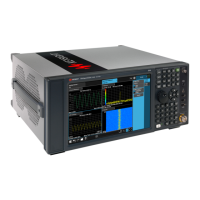
